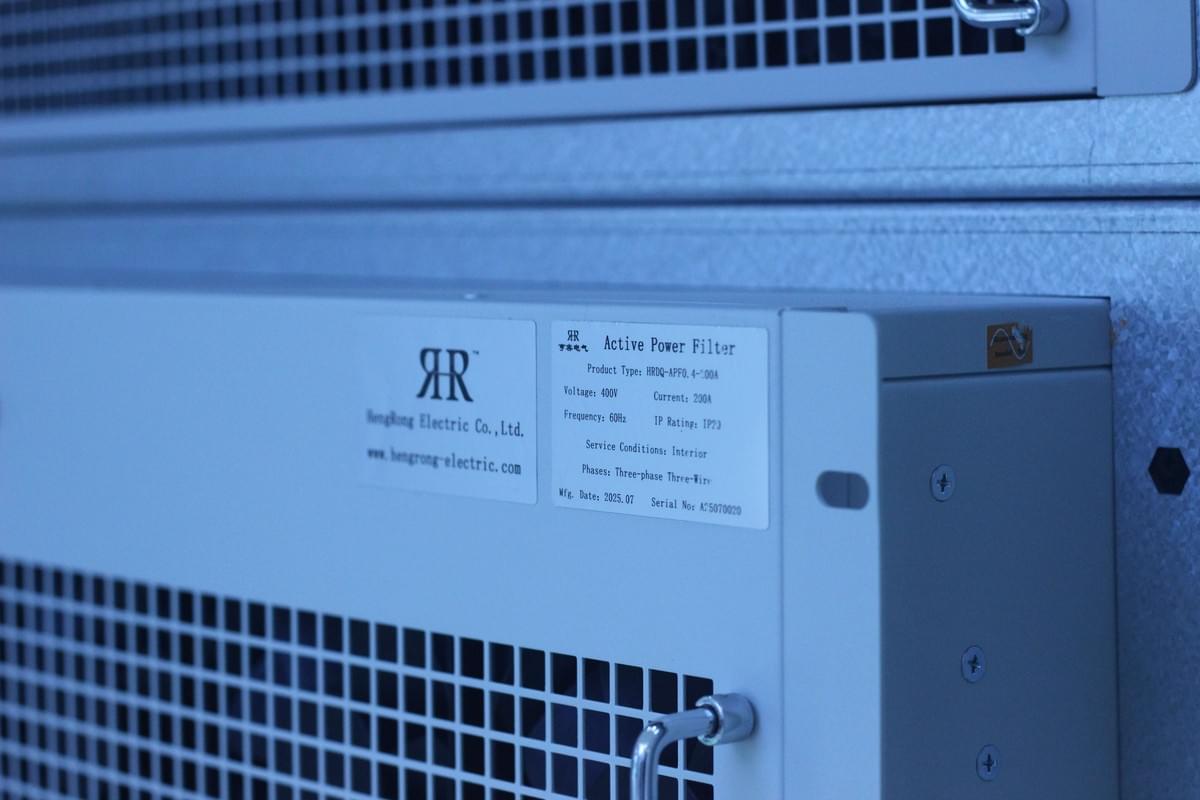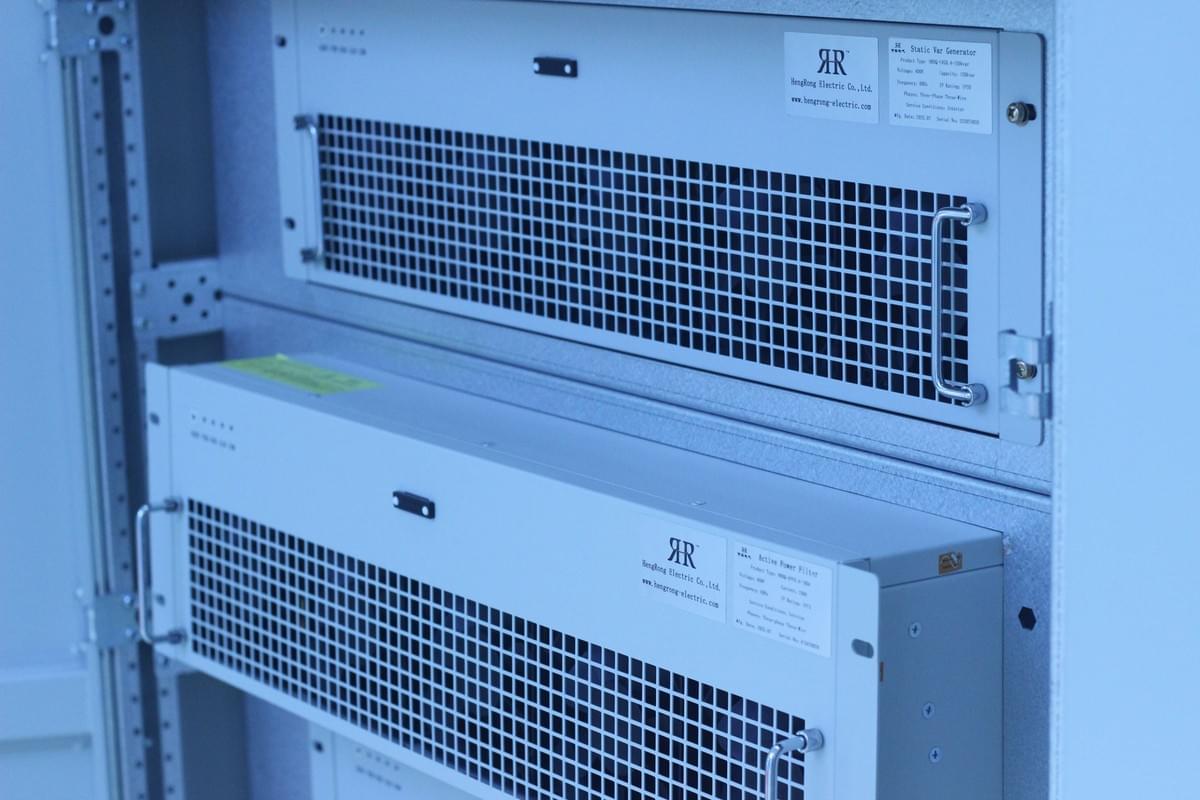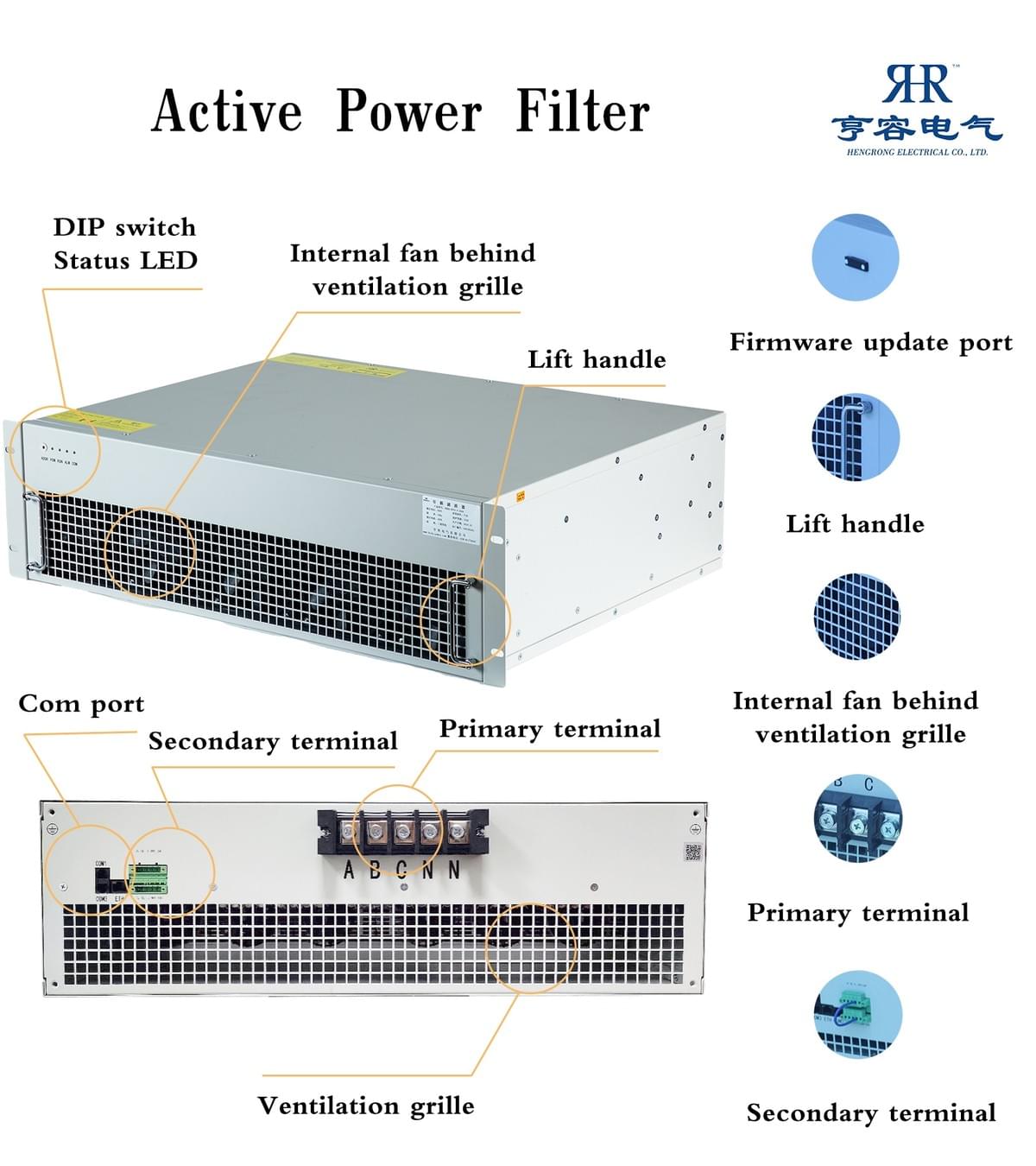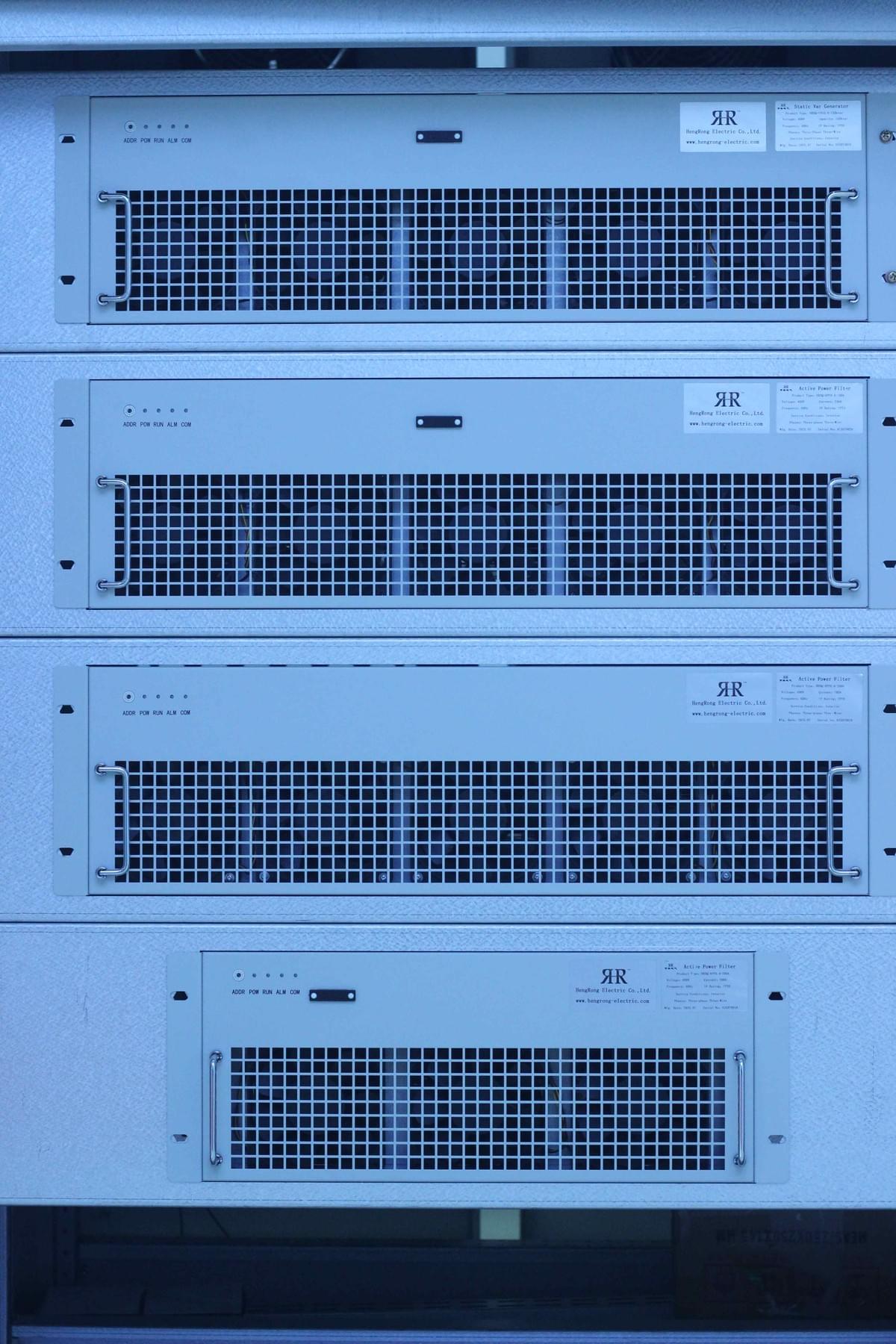In industrial production, harmonics generated by nonlinear loads such as frequency converters and rectifier equipment lead to reduced power quality of the power grid, shortened equipment service life, and increased line losses. As an efficient harmonic mitigation device, APF (Active Power Filter) requires scientific selection to solve such problems. Combining measured data and technical analysis, this article details the entire process of APF selection from the perspectives of harmonic detection, APF selection criteria, working principles, and installation applications, providing enterprises with practical harmonic mitigation solutions.

I. Industrial Harmonics and the Necessity of APF
Harmonic issues caused by nonlinear loads in workshops urgently need to be addressed. Traditional passive filtering has obvious limitations, and APF has become the preferred option due to its unique advantages.
1. Characteristics and Hazards of Industrial Harmonics
A workshop is equipped with a large number of low-voltage frequency converters (including high-power models). Such equipment and rectifier devices only generate odd-order harmonics (expanded by the Fourier series, the harmonic order on the AC side is 6k±1, where k is a positive integer). Measured data shows that:
• For Phase A: Total current is 530.00A, fundamental current is 510.59A, 3rd harmonic is 15.03A, 5th harmonic is 116.81A, 7th harmonic is 74.98A, 9th harmonic is 4.21A, 11th harmonic is 21.41A, 13th harmonic is 7.78A, 17th harmonic is 11.04A, 19th harmonic is 7.06A, total harmonic current content is 142.13A, and total harmonic distortion (THD) is 27.8%;
• For Phase B: Total current is 488.97A, fundamental current is 467.81A, 3rd harmonic is 19.65A, 5th harmonic is 114.50A, 7th harmonic is 77.11A, 9th harmonic is 6.36A, 11th harmonic is 22.61A, 13th harmonic is 7.11A, 17th harmonic is 12.28A, 19th harmonic is 7.35A, total harmonic current content is 142.30A, and THD is 30.3%;
• For Phase C: Total current is 471.55A, fundamental current is 450.45A, 3rd harmonic is 13.86A, 5th harmonic is 114.80A, 7th harmonic is 73.47A, 9th harmonic is 4.66A, 11th harmonic is 21.24A, 13th harmonic is 6.63A, 17th harmonic is 10.82A, 19th harmonic is 7.35A, total harmonic current content is 139.49A, and THD is 30.9%.
These data far exceed the requirements of relevant national standards. High harmonic content not only shortens the service life of electrical equipment and interferes with relay protection systems but also increases line losses, significantly raising enterprises' production costs.
2. Limitations of Passive Filtering and Advantages of APF
Current harmonic mitigation methods are mainly divided into passive filtering and active filtering. Combined with the workshop's actual situation (equipped with reactive power compensation devices, power factor 0.92), passive filtering has three major problems, which APF can perfectly avoid:
• Poor adaptability: The filtering characteristics of passive filters are greatly affected by system parameters. When the workshop load rate changes, the grid harmonic impedance decreases, and the filtering effect decreases accordingly;
• Easy to cause over-compensation: Passive filters are capacitive. When used in combination with existing reactive power compensation devices, they are likely to cause reactive power over-compensation, leading to a drop in power factor and abnormal rise in grid voltage, which threatens equipment safety;
• Narrow harmonic coverage: The workshop's harmonics are mainly 5th and 7th orders, and also include 3rd, 9th, 11th, and other orders. Passive filters can only eliminate specific orders of harmonics and may even amplify other harmonics or trigger resonance.
In contrast, APF can real-time track harmonic changes and dynamically compensate for multiple orders of harmonics, making it the optimal choice for workshop harmonic mitigation.

II. Harmonic Detection and Calculation Before APF Selection
Accurate acquisition of harmonic data is the prerequisite for scientific APF selection. Standard detection and load rate conversion are required to clarify the APF mitigation target and capacity requirements.
1. Harmonic Detection: Clarify the Target of APF Mitigation
Harmonic detection in the workshop is carried out for the 10kV incoming line system, with reactive power compensation devices installed on the load side. The detection content includes key parameters such as total current, fundamental current, and harmonic current of each phase for each order.
The calculation method for total harmonic current content is: square and sum the harmonic currents (root mean square values) starting from the 2nd order, then take the square root of the sum result. The calculation method for total harmonic distortion (THD) is: divide the total harmonic current content by the fundamental current (root mean square value), then multiply by 100%.
The detection results show that the workshop's harmonics are mainly 5th and 7th orders, requiring targeted mitigation by APF.
2. Load Rate Conversion: Determine APF Capacity Requirements
The detection is carried out during the equipment commissioning phase, when the workshop load is not fully operational, with a measured load rate of 54%. To ensure that APF can effectively filter harmonics under full-load conditions, it is necessary to convert the total harmonic content to that under 100% load rate:
• Conversion logic: Total harmonic content under 100% load rate = Total harmonic content during detection ÷ Test load rate;
• Example calculation: The detected total harmonic content of Phase B is 142.30A, so the total harmonic content under 100% load rate is 142.30A ÷ 0.54 ≈ 263.52A;
• Margin consideration: Combined with load fluctuations during the peak production season (which may temporarily exceed 100%), the total mitigation capacity of APF must reserve a reasonable margin to avoid insufficient capacity.
III. Working Principle of APF
The shunt APF, which is mainstream in industrial scenarios, achieves harmonic filtering through closed-loop control of "detection-compensation-offset". Its working principle is the core technical basis for selection.
1. Core Filtering Process
• Harmonic detection:
APF collects load current through current sensors and separates fundamental current and harmonic current using specific algorithms;
• Compensation current generation: The inverter inside APF generates a compensation current with equal magnitude and opposite direction based on the harmonic current;
• Harmonic offset: After the compensation current is injected into the power grid, it offsets with the load harmonic current, making the harmonic current on the grid side approach zero. From the perspective of equivalent circuit relationship, the harmonic current on the grid side is equal to the harmonic current on the load side minus the compensation current output by APF. When the compensation current output by APF is equal in magnitude to the harmonic current on the load side, the harmonic current on the grid side becomes zero, achieving perfect filtering.
2. Key Performance Characteristics
The filtering effect of APF is determined by its core performance. A high-quality APF must meet the following requirements:
• Fast response: Response time not exceeding 100 microseconds, enabling real-time tracking of dynamic harmonic changes in the workshop;
• High filtering rate: Filtering rate of 5th and 7th harmonics exceeding 95%, capable of reducing total harmonic distortion from 30% to below 5%;
• Flexible expansion: Supporting parallel connection of multiple units to adapt to harmonic mitigation needs of different load scales.

IV. APF Selection and Installation
Combined with harmonic data and load characteristics, APF selection must accurately match the capacity and reasonably plan the installation location to maximize the mitigation effect.
1. Capacity Selection: Match Requirements
• Capacity calculation: Based
on the total harmonic content under 100% load rate (263.52A), add a 10%-20% margin, and finally determine that the total mitigation capacity of APF needs to be approximately 300A;
• Equipment configuration: Select two 150A modular APFs connected in parallel, with a total mitigation capacity of 300A, which not only meets current needs but also reserves space for future load expansion;
• Selection principle: Prioritize modular APFs, with single-unit capacities available in 100A, 150A, 200A, etc., facilitating future equipment addition or reduction.
2. Installation Location: Improve Efficiency
APF installation follows the principle of "proximity to harmonic sources". The specific plan is: connect APF in parallel to the load-side bus (near the frequency converter and rectifier equipment distribution box) instead of the 10kV incoming line terminal.
This plan can directly offset harmonics generated by the load, reduce the transmission loss of harmonics in the workshop's internal lines, and avoid interference with existing reactive power compensation devices.
V. APF Application Effects
After installing two 150A APFs in the workshop, the measured effects are significant, bringing benefits in three aspects: power quality, cost control, and equipment service life:
• Qualified power quality: APF effectively filters 3rd, 5th, 7th, 9th, and other orders of harmonics, reducing the total harmonic distortion from 27.8%-30.9% to below 5%, which meets the requirements of relevant national standards;
• Cost reduction: Line losses are reduced, saving more than 15,000 RMB in electricity fees annually, while avoiding electricity fee fines caused by low power factor;
• Equipment protection: Reduced heat generation of motors, transformers, and other equipment, lowering the failure rate by 30%, extending service life, and reducing maintenance and replacement costs.
VI. Conclusion: APF Is the Preferred Choice for Industrial Harmonic Mitigation
With the advantages of dynamic compensation, multi-order harmonic filtering, and flexible adaptability, APF has become the core device for solving industrial harmonic problems. Through standard harmonic detection, accurate capacity calculation, and reasonable installation and deployment, APF can effectively improve power quality and provide strong support for enterprises to reduce costs and increase efficiency.

If your workshop has similar harmonic problems, please feel free to inform us of the load type, current harmonic distortion rate, and other parameters. Hengrong Electric CO., LTD will customize an exclusive mitigation solution for you based on APF selection technology!
